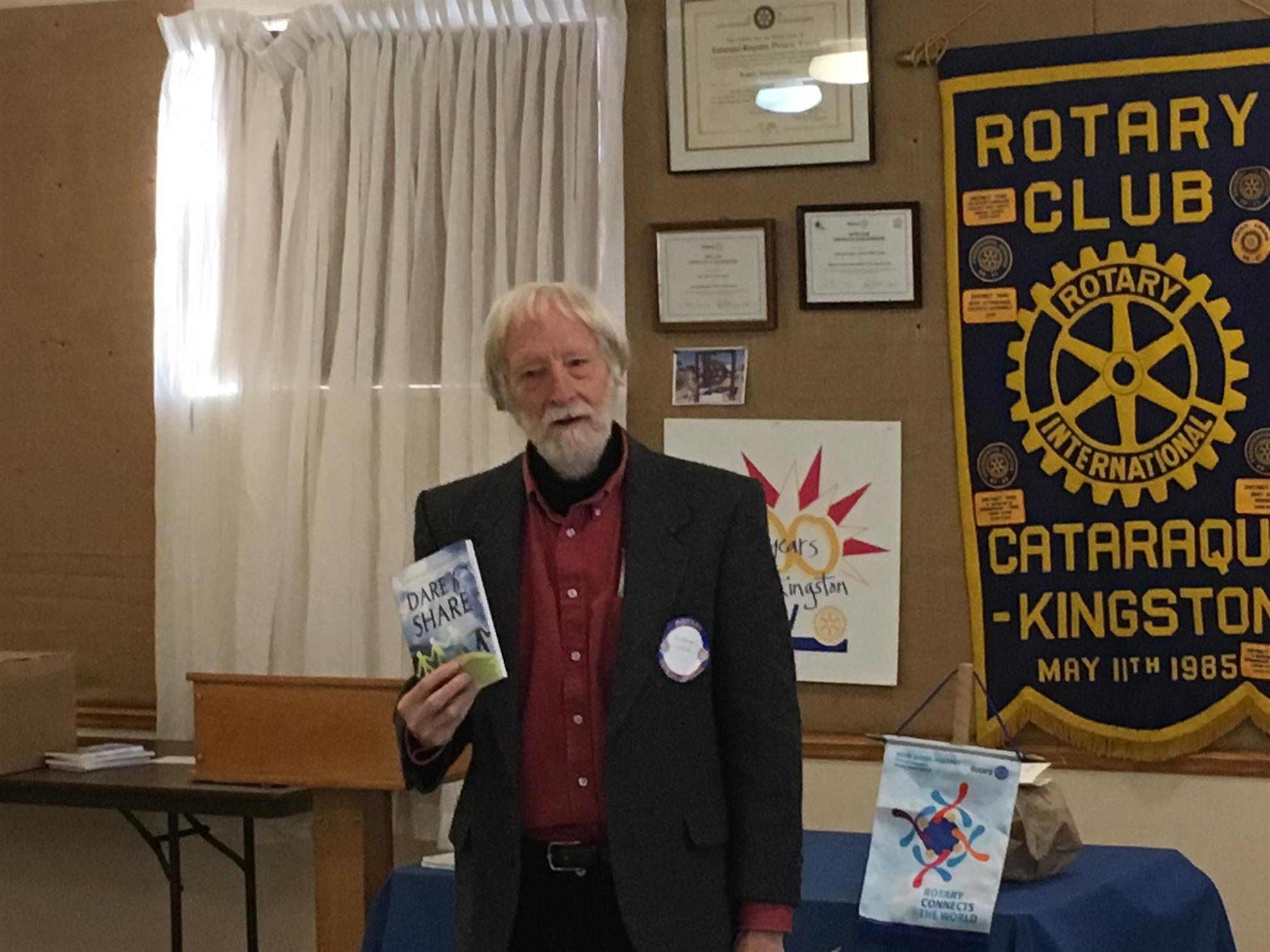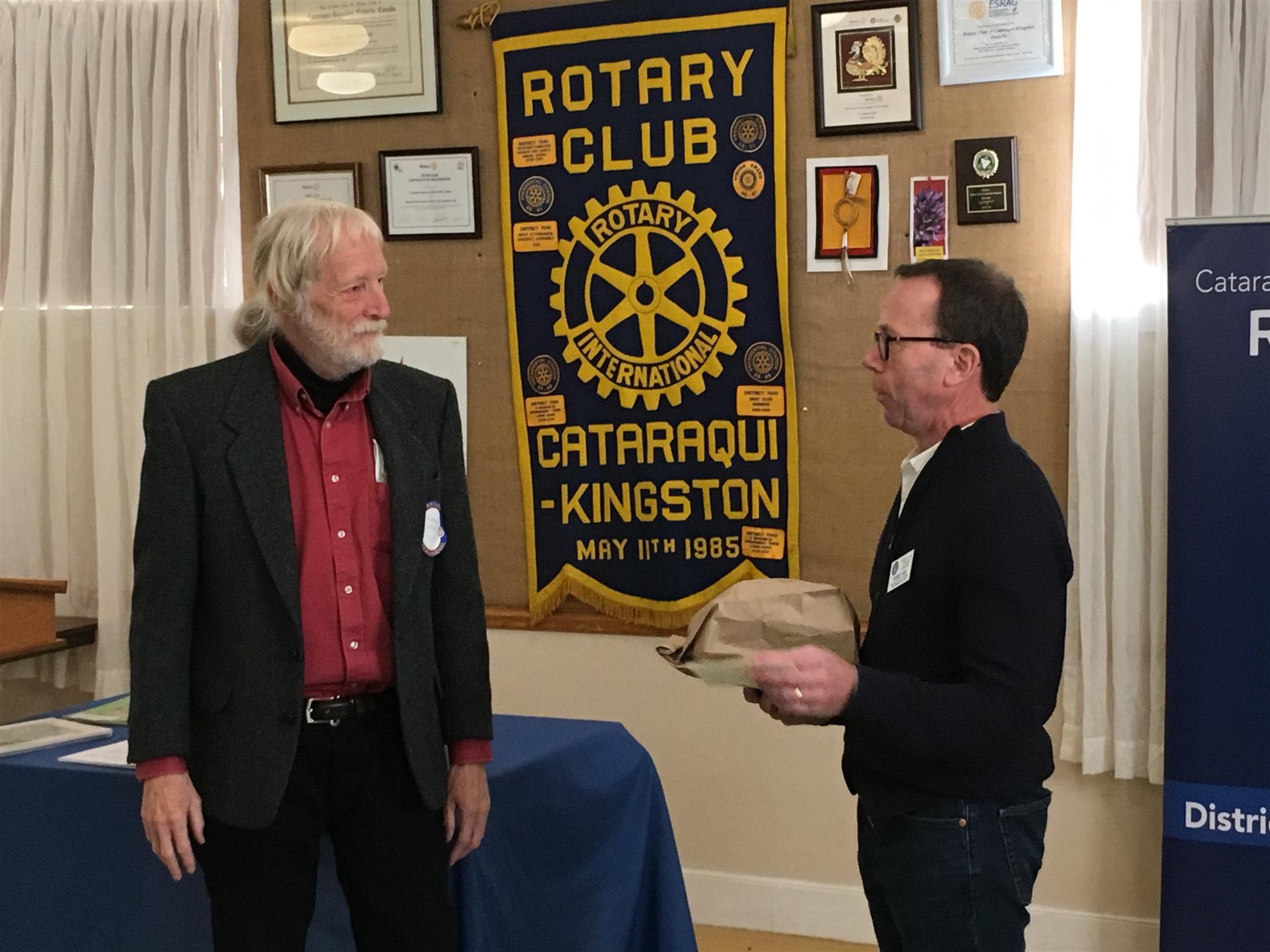John Farrow introduced our guest speakers, Judy Bierma and Anthony Gifford. John remarked that has been looking forward to this topic because he has two adult children still living at home! Anthony and Judy emailed the club through our website asking to come and talk about their alternative housing arrangement, as they would like to talk to organizations like ours to promote a new way to look and co-operative housing.
Judy and Anthony lived on a boat for 13 years. When they came off the boat and wondered what to do next, they came up with the idea of sharing a house with other people like themselves. They are now sharing a five bedroom house with two other people (and looking for another housemate). They started with a good friend who came here from out west. One bedroom might be kept empty and may be used in the future for guests. They are doing this for financial reasons - average pensioner income is going down, while housing costs are going up, and assisted living is very expensive. In assisted living, people can't help each other with daily tasks because of liability. Judy and Anthony were looking not only for financial assistance, they want the social interaction shared housing provides. Statistics indicate that people living together call 911 and visit emergency rooms much less. Loneliness is biggest health problem for seniors.
They each staked $70,000 for the down payment and per bedroom cost is $600 a month . Filling the house isn’t a problem, there is a waiting list. Anthony was here to promote the model, not their house, because they are full now.
Benefits include a lower cost to the city than for subsidized housing, and a lower carbon footprint. A significant portion of greenhouse gasses are produce by home heating, so full houses are more environmentally friendly. The house also only has two cars for 5 people. He and Judy wouldn’t have likely planted a garden but with a group it turned into fun and it added to their food. He believes they create a smaller carbon footprint.
Down side? Of course you step on each others toes from time to time, but you are in control and have more freedom. Acceptance of the model is a challenge, because our society today isn’t big on sharing. Anthony wrote a book called “Dare to Share” to talk about our need to learn to share more in our society.

Judy and Anthony are making their house a non-profit model but other models are possible, like should we allow or not allow pets? Compared to what it costs the city for affordable housing, Judy and Anthony's model seems pretty appealing.
.
Questions.
Who owns the house? There are different ways of dividing ownership. Presently they are “landlords”.
Are there issues with inspections? Run as single-family place so no tenant - landlord dynamic.
Do people sign agreements? No. People can be "voted off the island".
They ease people in, beginning with a short visit and extending to overnight etc. They have a waiting list.
Robert Reid thanked our speakers with our traditional loaf of bread.


